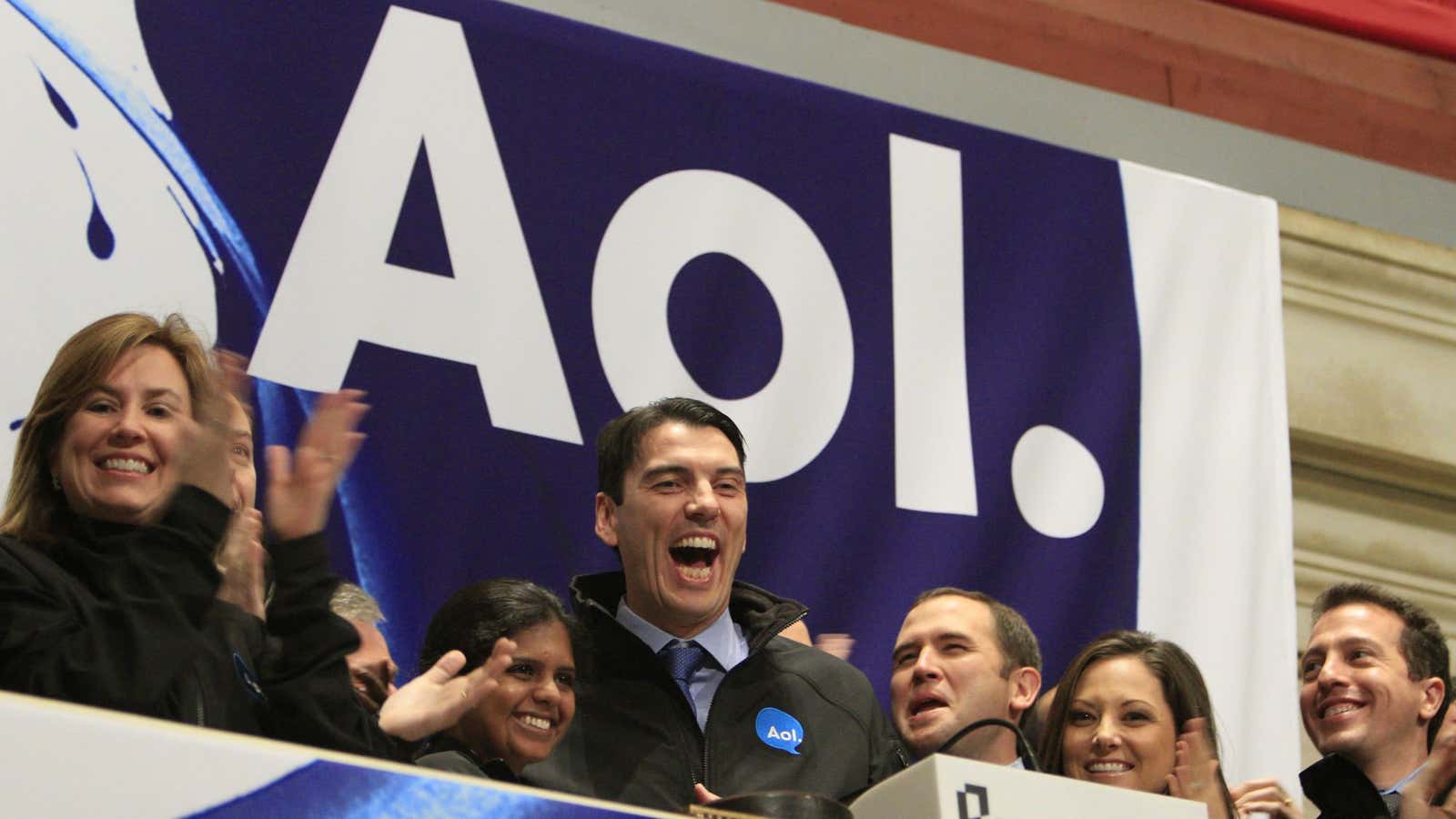Forget about dial-up, the Huffington Post, You’ve Got Mail, or Netscape. All the things usually associated with AOL are irrelevant to its acquisition deal with Verizon, announced this morning.
AOL is worth $4.4 billion to Verizon because AOL has in its armory all the weapons media companies need in 2015: ad serving, programmatic video technology, multi-touch attribution, a personalization engine, and other bits of advertising jargon that aren’t remotely interesting to anyone in the outside world. But on such bits of gobbledegook are billion-dollar fortunes made. Just ask Mark Zuckerberg.
Don’t just take my word for it, here it is laid out in Verizon’s press release:
Verizon’s acquisition further drives its LTE wireless video and OTT (over-the-top video) strategy. The agreement will also support and connect to Verizon’s IoT (Internet of Things) platforms, creating a growth platform from wireless to IoT for consumers and businesses.
AOL is a leader in the digital content and advertising platforms space, and the combination of Verizon and AOL creates a scaled, mobile-first platform offering directly targeted at what eMarketer estimates is a nearly $600 billion global advertising industry. AOL’s key assets include its subscription business; its premium portfolio of global content brands, including The Huffington Post, TechCrunch, Engadget, MAKERS and AOL.com, as well as its millennial-focused OTT, Emmy-nominated original video content; and its programmatic advertising platforms.
The word “platform” or “platforms” appears five times in those two paragraphs. “Platforms” is also the word AOL executives use to describe the company’s main area of focus. A platform is anything other businesses can use to conduct business, with a share going to the company that owns the platform.
Despite—or perhaps because of—its long history and its familiarity to American consumers, AOL is not perceived as a sexy tech business like Google or Facebook. Yet it sells exactly the same thing as those two companies: technology for online advertising. This includes ways to get ads to viewers; the means to count how many people saw an ad, and what they did after that; and the platforms for businesses to buy and sell ads. AOL has also been investing heavily in online video, which is widely regarded as the next major battleground for online advertising.
Verizon’s move is a bid to avoid being relegated to just ferrying data along without making any money from the services in between. What it has bought, then, is not so much an old internet firm with some well-known websites and a few old-school subscribers, but a bet that it will be able to take on the giants of the web.
